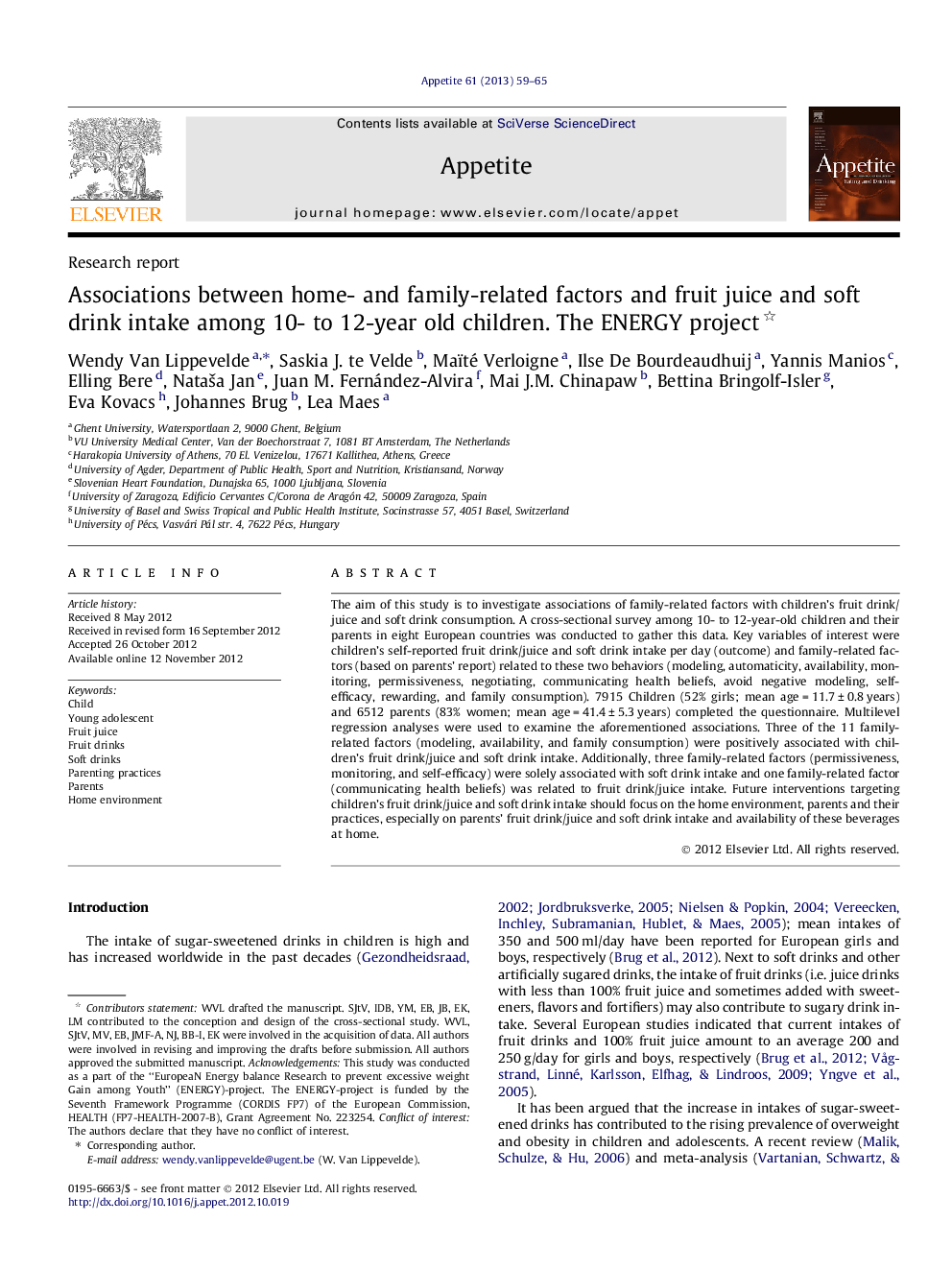| Article ID | Journal | Published Year | Pages | File Type |
|---|---|---|---|---|
| 939730 | Appetite | 2013 | 7 Pages |
The aim of this study is to investigate associations of family-related factors with children’s fruit drink/juice and soft drink consumption. A cross-sectional survey among 10- to 12-year-old children and their parents in eight European countries was conducted to gather this data. Key variables of interest were children’s self-reported fruit drink/juice and soft drink intake per day (outcome) and family-related factors (based on parents’ report) related to these two behaviors (modeling, automaticity, availability, monitoring, permissiveness, negotiating, communicating health beliefs, avoid negative modeling, self-efficacy, rewarding, and family consumption). 7915 Children (52% girls; mean age = 11.7 ± 0.8 years) and 6512 parents (83% women; mean age = 41.4 ± 5.3 years) completed the questionnaire. Multilevel regression analyses were used to examine the aforementioned associations. Three of the 11 family-related factors (modeling, availability, and family consumption) were positively associated with children’s fruit drink/juice and soft drink intake. Additionally, three family-related factors (permissiveness, monitoring, and self-efficacy) were solely associated with soft drink intake and one family-related factor (communicating health beliefs) was related to fruit drink/juice intake. Future interventions targeting children’s fruit drink/juice and soft drink intake should focus on the home environment, parents and their practices, especially on parents’ fruit drink/juice and soft drink intake and availability of these beverages at home.
► Study of associations between parenting practices and soft drinks and fruit juice intake. ► Parental role-modeling is positively associated with children’s intake of fruit juice and soft drinks. ► The more soft drinks and fruit juices are available at home, the more children consume. ► Family fruit juice and soft drinks consumption habits are proportional to children’s intake.
